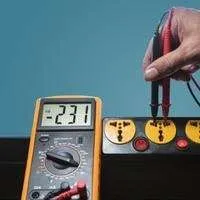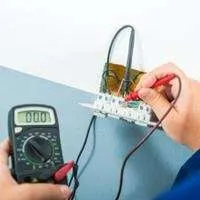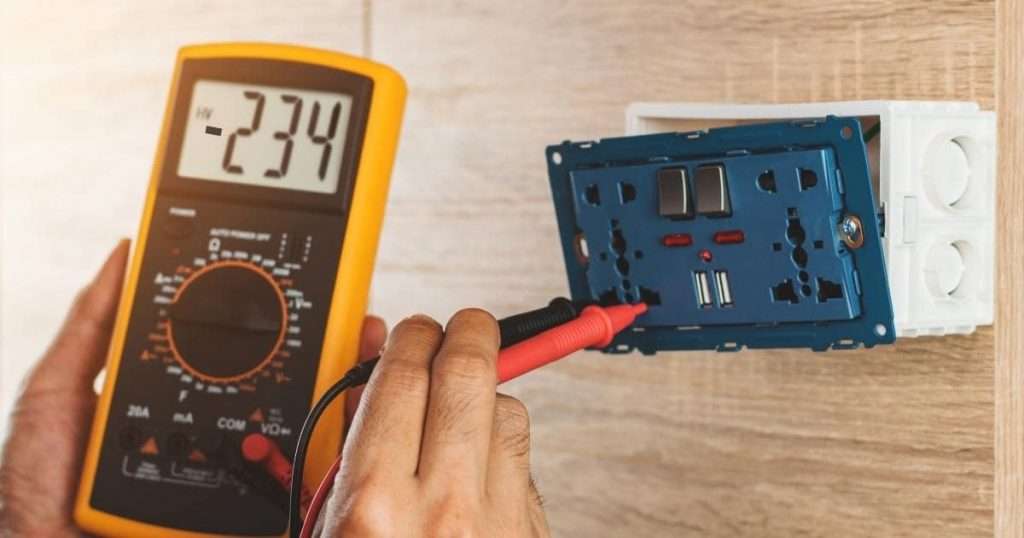While measuring the voltage of a circuit, you may have observed a negative voltage reading on your multimeter.
Don’t be confused; we’ll explain negative voltage, what negative voltage means on a multimeter and how to measure voltage correctly.
Let’s get started.
Table of Contents
ToggleWhat does negative voltage mean?
Voltage is the potential difference between two points, and negative and positive voltages are equal, except for the difference in the number of electrons. Negative voltage means an excess of electrons between two tested points, while in positive voltage, there is a deficiency of electrons.
You might think negative voltage is just an error, or it’s applicable.
Yes, a negative voltage is used in transistors, amplifiers, and the telecom industry to prevent overheating due to electrochemical reactions, such as -48 V is used in telecom.
According to Kirchoff’s voltage law, “the sum of potential differences in a loop should equal zero, ΣV = 0“. That’s why the same amount of negative voltage exists in the opposite direction of the positive voltage.
What does negative voltage mean on a multimeter?
A multimeter shows negative voltage when its probes are connected in opposite directions. When we reverse the order of probe connection, the polarity (direction) of the multimeter is reversed.
A negative voltage on a multimeter means we measure voltage in the opposite direction of the potential difference.
Generally, in a circuit, live wire carries a charge that reaches back to the power source through the neutral wire, completing a circle.
During voltage measurement, the red probe receives charge from the live wire, and the black probe detects potential differences from the ground point. The multimeter considers any wire connected to the black probe a ground point.
But when probes are reversed, the current enters the multimeter via a black probe that is supposed to be the ground connection and leaves through the red probe that usually detects live wire.
Let’s understand with a general example.
If we measure a guy’s height from foot (ground) to head, let’s say it’s 5.8 feet now if we dig a pit and stand that guy inside the hole. Although his height remains the same, the ground or center point is changed.
As we know the rule of mathematics, if anything moves away from its center point (0), it gets a negative sign. In another way, if we reverse the order of values symbol is changed from positive to negative and vice versa.
Same as when probes are reversed, the multimeter detects charges moving in the opposite direction, which results in negative voltage reading.
Hopefully, this explanation is enough to understand what negative voltage means.
How to Measure voltage with a multimeter
Sometimes, a voltage measurement is required while troubleshooting an error or evaluating your home electrical system.
Generally, we use a multimeter to measure the voltage of any circuit, as it’s quite easy and measures accuracy.
Set the multimeter to AC or DC voltage setting. Connect the red probe to a live wire or any wire connected to the positive terminal of a battery and the black probe to the ground wire or battery’s negative terminal.
Follow step-by-step.
Step 1: Set up Multimeter
Connect probes into multimeters. Insert the black probe into the COM port and the red probe into VmAΩ labeled port.
Adjust the dial to measure voltage. There are two settings for measuring AC and DC voltage.
If you are testing your home electrical system, adjust the AC voltage setting denoted by ACV or V〜.
If you are testing a circuit where the battery supplies power, set the DC voltage setting, represented by DCV or V, with a dotted line.
While testing an AC circuit, adjust the highest voltage range, as we have to detect high voltage current.
Step 2: Connect probes to testing points.
In an AC circuit, the red probe connects to the live wire, and the black probe is connected to the ground or neutral wire.
While testing the voltage of a battery-based circuit, set the multimeter to DC voltage. Connect the red probe to the positive terminal or any wire connected to the positive terminal while the black probe goes to the negative battery terminal.
Step 3: Read the Measurements
If your tested circuit is complete, the current can flow in a full cycle(loop) the multimeter will display the circuit’s voltage.
On the other hand, if the circuit is incomplete, the multimeter will show one or OL, which means an open line or open loop (incomplete circuit).
Conclusion
So a negative voltage is not an error but exists in a circuit, opposite to the positive voltage. A negative voltage on a multimeter means probes are placed in the reverse order, black in place of red and red in black.
To measure voltage correctly, we connect the red probe to the live wire and the black probe to the ground or neutral wire.
Hopefully, this lesson will help you understand what negative voltage means on a multimeter and how to measure the voltage of any circuit.
Related Guides:






